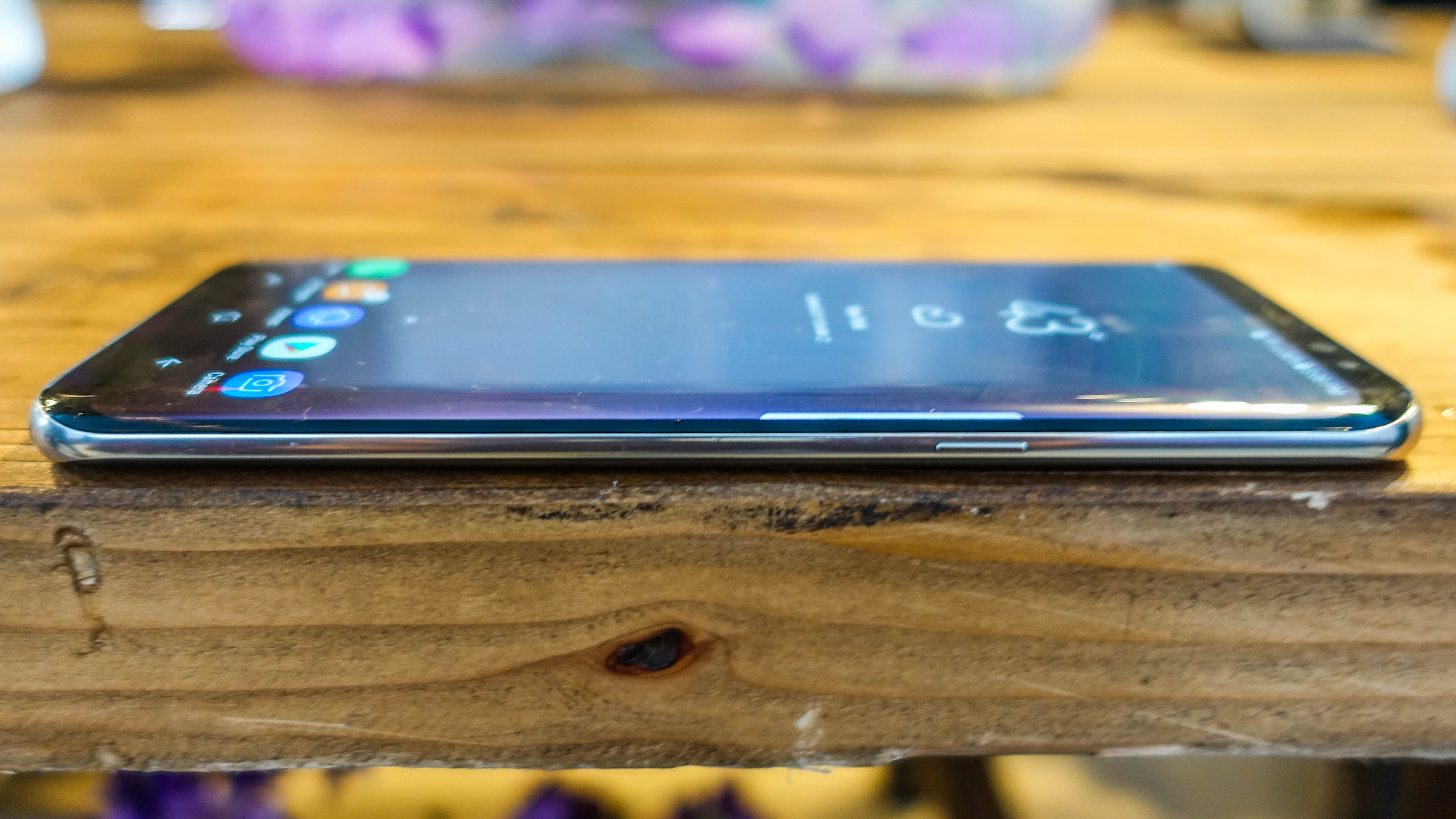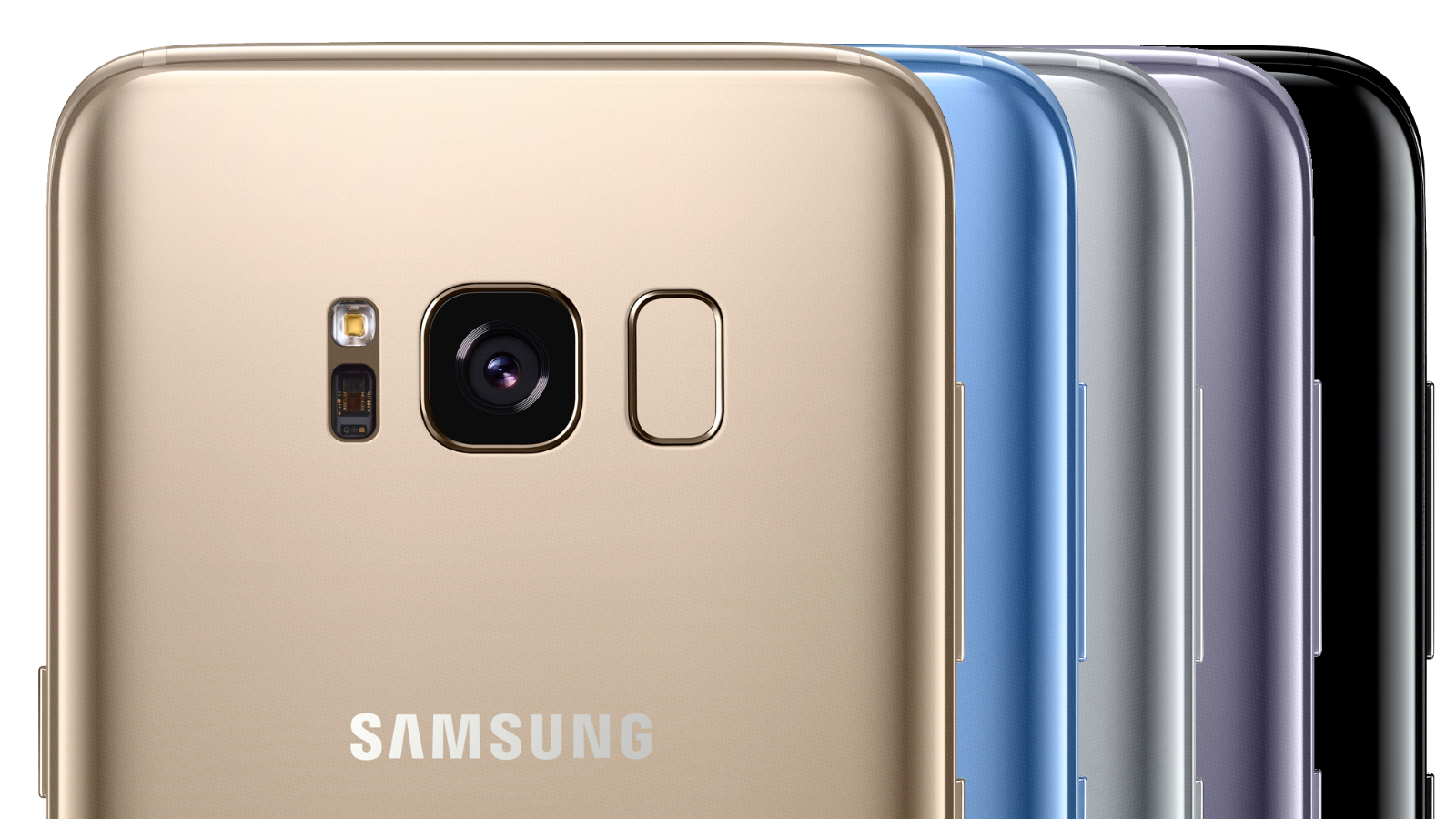Samsung Galaxy S8 vs Samsung Galaxy S8 Plus: what's the difference?

Samsung's two new flagship phones, the Samsung Galaxy S8 joined by the larger Samsung Galaxy S8 Plus – are now out in the wild.
But with the standard S8 also sporting a curved screen, the differences between the two are less obvious than the differences between, say, the Galaxy S7 and Samsung Galaxy S7 Edge.
So, to give you a clearest picture possible, we’ve created a breakdown of the ways in which these two phones differ, and the things that are the same.
- Read our in-depth Samsung Galaxy S8 review
Screen
While the Galaxy S7 Edge’s screen is very different to the Samsung Galaxy S7’s by virtue of being curved, the same difference isn't present this year, as both the Samsung Galaxy S8 and Samsung Galaxy S8 Plus have a curved Infinity display – hence why the Edge name has been ditched.
They also both use Super AMOLED technology, and they both have a widescreen 18.5:9 aspect ratio with a 1,440 x 2,960 resolution – which is an upgrade on the 1,440 x 2,560 screen on last year’s handsets.

So, as you’ve probably guessed, it’s the size that's the real difference, as the Samsung Galaxy S8 has a 5.8-inch display, while the Samsung Galaxy S8 Plus has a 6.2-inch one.
It’s worth noting that this means the screen on the S8 Plus is less sharp with fewer pixels per inch, but it’s not a difference you’re likely to notice much at all.
Sign up for breaking news, reviews, opinion, top tech deals, and more.
- Read our in-depth Samsung Galaxy S8 Plus review
Design
The Samsung Galaxy S8 and Samsung Galaxy S8 Plus have an almost identical design, with a glass back, a metal frame and tiny bezels above and below the screen.
There is no physical home button on either phone and the fingerprint scanner has been relocated to the back next to the camera. Both the S8 and S8 Plus are also water and dust resistant with an IP68 rating.
The differences, again, are related to their size. The Samsung Galaxy S8 is 148.9 x 68 x 8mm, while the Samsung Galaxy S8 Plus is 159 x 74 x 8mm, meaning they're the same thickness, but the S8 Plus is significantly longer and a bit wider.

These dimensions make the S8 Plus a phablet-sized phone, and even the standard S8 slightly on the large side, but neither is as big as you might expect given their screen sizes.
By almost eliminating the bezel, Samsung has managed to make the standard Samsung Galaxy S8 smaller than the Samsung Galaxy Note 7, while the Samsung Galaxy S8 Plus is a similar size overall to the iPhone 7 Plus. It's a pretty remarkable achievement.
Of course, the S8 Plus is heavier than the S8 as well as being larger, but it shouldn't weigh you down too much.
OS and power
There's no difference here between the devices, but there are different versions of the phone set to release in certain regions around the globe.
Both handsets have 4GB of RAM, but the chipset may differ depending on where you are. In the US, your phone will have the Snapdragon 835, and elsewhere, you'll be running the Samsung-made Exynos 8895.
Exynos chipsets have a reputation for beating Qualcomm's each yet, but either way, you're still getting a cutting-edge octa-core chipset that's more than capable at chewing through current and future apps and games.

Both the Samsung Galaxy S8 Plus and the standard Samsung Galaxy S8 also run Android Nougat, overlaid with Samsung’s TouchWiz UI.
Camera
This too is the same for both phones, and also something which isn’t much different to last year’s, with a 12MP single-lens snapper on both the S8 and S8 Plus – just like the S7 and S7 Edge had.

But the front-facing camera has at least been upgraded, with both handsets getting an 8MP one, where the S7 range has a 5MP one. Of course megapixels aren't everything, but we came away impressed as expected with the results. Our reviews showcase the results of both cameras in various environments and lighting conditions.
Battery
Other than the screen, the battery is the biggest difference between the Samsung Galaxy S8 and the Galaxy S8 Plus, as Samsung is using the extra space inside the S8 Plus to pack in a 3,500mAh juice pack, while the standard Galaxy S8 has just a 3,000mAh one.
It’s worth noting that neither size is massive, especially given the size of the phones they’re powering. The S8’s is the same size as the S7’s, and the battery in the S8 Plus is actually marginally smaller than the 3,600mAh one in the Galaxy S7 Edge.

That may sound like a worry for those who want multi-day performance, but it’s a decision that was likely made to avoid risking another Note 7-like catastrophe.
Plus, thanks to the more power-efficient chipsets found inside of each phone, we were impressed with their efficiency. Both phones didn't have an issue reaching the day-and-a-half milestone while utilizing some of the built-in battery saving functions.
Both handsets also support fast charging via a USB Type-C port.
Price
The Samsung Galaxy S8 is going to cost $720 (£689, AU$1,349) SIM-free, which makes it one of the most expensive phones money can buy.
While the Galaxy S8 Plus costs $825 (£779.99, AU$1,349) if you want to buy it right now, so you'll be spending quite a bit of extra money on the larger Samsung.
Takeaway
There's not a huge amount of difference between the Samsung Galaxy S8 and the Samsung Galaxy S8 Plus. Where previously Samsung differentiated largely based on the presence or absence of a curved screen, now all models have curves.

You also can’t really think of one as being a phablet while the other one is a ‘normal’ handset, as with even the standard Galaxy S8 coming in at 5.8 inches both of them are phablet-sized.
But at 6.2 inches the Samsung Galaxy S8 Plus is still significantly larger, and the bigger battery might give it longer life.
Otherwise, there looks to be little to choose between them, with the Galaxy S8 having a slightly sharper screen and more manageable dimensions, but the Galaxy S8 Plus being a better bet for real phablet fans. So, which is your pick?
- Check out our newly revamped list of the best phones?
James is a freelance phones, tablets and wearables writer and sub-editor at TechRadar. He has a love for everything ‘smart’, from watches to lights, and can often be found arguing with AI assistants or drowning in the latest apps. James also contributes to 3G.co.uk, 4G.co.uk and 5G.co.uk and has written for T3, Digital Camera World, Clarity Media and others, with work on the web, in print and on TV.